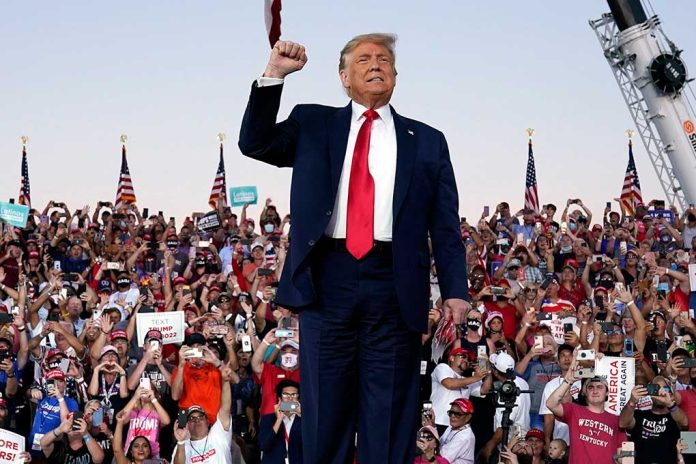
President Donald Trump’s federal workforce reorganization reshapes agency landscapes, challenging employee loyalty and agency independence.
Key Takeaways
- The administration offers federal employees buyouts worth seven months of salary for voluntary resignations.
- This strategy is part of a broader plan to overhaul the federal workforce, prioritizing loyalty.
- Federal employees who resign will continue receiving pay and benefits without in-person duties until September 30.
- There are legal and ethical controversies surrounding the dismissal and replacement of inspectors general and other officials.
Federal Workforce Buyout Initiative
The White House is offering federal employees a buyout option as part of President Trump’s workforce reorganization initiative. Employees choosing to leave by February 6 receive seven months of salary, while retaining pay and benefits without in-person work requirements through September 30. The program’s effectiveness began on January 28 and is open to all federal employees. This move aligns with Trump’s strategy to replace perceived disloyal federal workers with more supportive personnel.
A memo from the Office of Personnel Management indicates four directives for the federal workforce. One major directive requires most federal staff to return to office full-time. Participants in the buyout program use a “deferred resignation letter” for their application, a part of the comprehensive reorganization plan aiming to align government functions with loyalty to the president.
Implications of Workforce Reorganization
The program aims to fill government roles with loyalists, affecting independent and nonpartisan agency sectors. Trump has reportedly fired inspectors general and other officials, raising concerns about potential federal law violations and the ethicality of such actions. The administration is accused of stripping protections for former employees, including security clearances.
“The President has no authority to make that offer. There’s no budget line item to pay people who are not showing up for work. If you accept that offer and resign, he’ll stiff you.” – Democratic Sen. Tim Kaine
The legal challenges against Trump’s executive orders are mounting, characterized by some as vague. This has sparked uncertainty among federal workers, with concerns about the continuation and escalation of these measures under Trump’s administration.
Robert F. Kennedy Jr. (RFK Jr.) has indicated plans to significantly overhaul the National Institutes of Health (NIH) if given the opportunity under a potential Trump administration.
Here's what has been reported:
– NIH Overhaul: RFK Jr. has expressed intentions to replace 600… pic.twitter.com/nikCJt8aM4
— 𝕏 Analyst (@XAnalyst2020) November 12, 2024
Controversy Over Loyalty and Retaliation
Former officials express concern about a possible purge designed to consolidate loyalists within the administration. The firing of former officials, including independent inspectors general, highlights this initiative. Trump’s controversial measures have reportedly removed Democrats from independent commissions, potentially violating federal statutes. Critics, such as John Bolton, characterize these actions as retaliatory and politically motivated.
“There’s only one interpretation that makes any sense. It was political. And this is part of an effort at retribution.” – John Bolton
The future of these efforts rests on legal outcomes and public response, but the current atmosphere remains tense within the federal workforce. Questions about loyalty and agency independence persist as the administration continues its efforts to reengineer the structure of federal operations.
Sources
1. Trump goes to war with the federal workforce
2. Trump offering federal workers buyouts with about 8 months’ pay in effort to shrink government









